🧠🏷️ Selection of experience for memory by hippocampal sharp wave ripples

Wannan Yang1,3, Chen Sun2, Roman Huszár1,3, Thomas Hainmueller1,4, Kirill Kiselev3, György Buzsáki1,3*
How does the brain select what to consolidate during sleep? Our new work sheds light on the brain’s mechanism for selective memory consolidation. We propose that awake ripples act as a memory tag 🏷️– the memories that are tagged by awake ripples are selectively consolidated during sleep!

Using dual sided probes, we were able to record up to 500 neurons simultaneously while animals perform an alternation task on the figure-8 maze.

UMAP visualization revealed that population activity of the hippocampus corresponded to a latent space that topologically resembled the physical environment. This visual, though beautiful, was not surprising since hippocampus is known to keep a ‘cognitive map’ of the world.
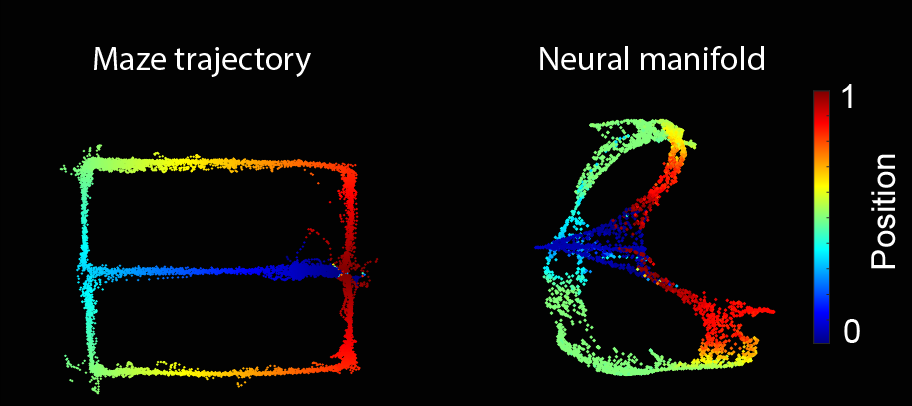
What was really unexpected was when we colored the neural manifold by trial number, we saw the hippocampal states systematically vary according to trial sequence.
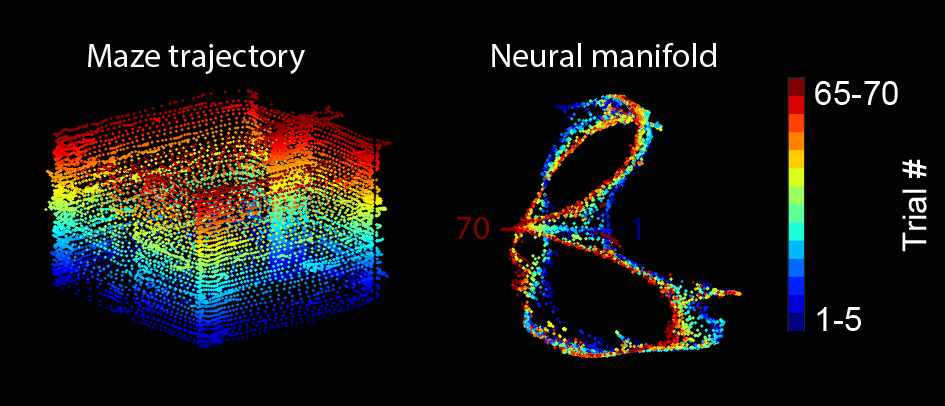
As per Heraclitus, “No man ever steps in the same river twice. For it’s not the same river and he’s not the same man.” Even as the animal revisits the same places, the brain state is never the same twice, always in perpetual flux, changing in a systematic way. ⏳
When animals consume reward, synchronous population events, aka sharp wave ripples, usually take place. Ripples are known to ‘replay’ past experiences. Crucially, we were able to decode not only which places were replayed but also which lap events were replayed.
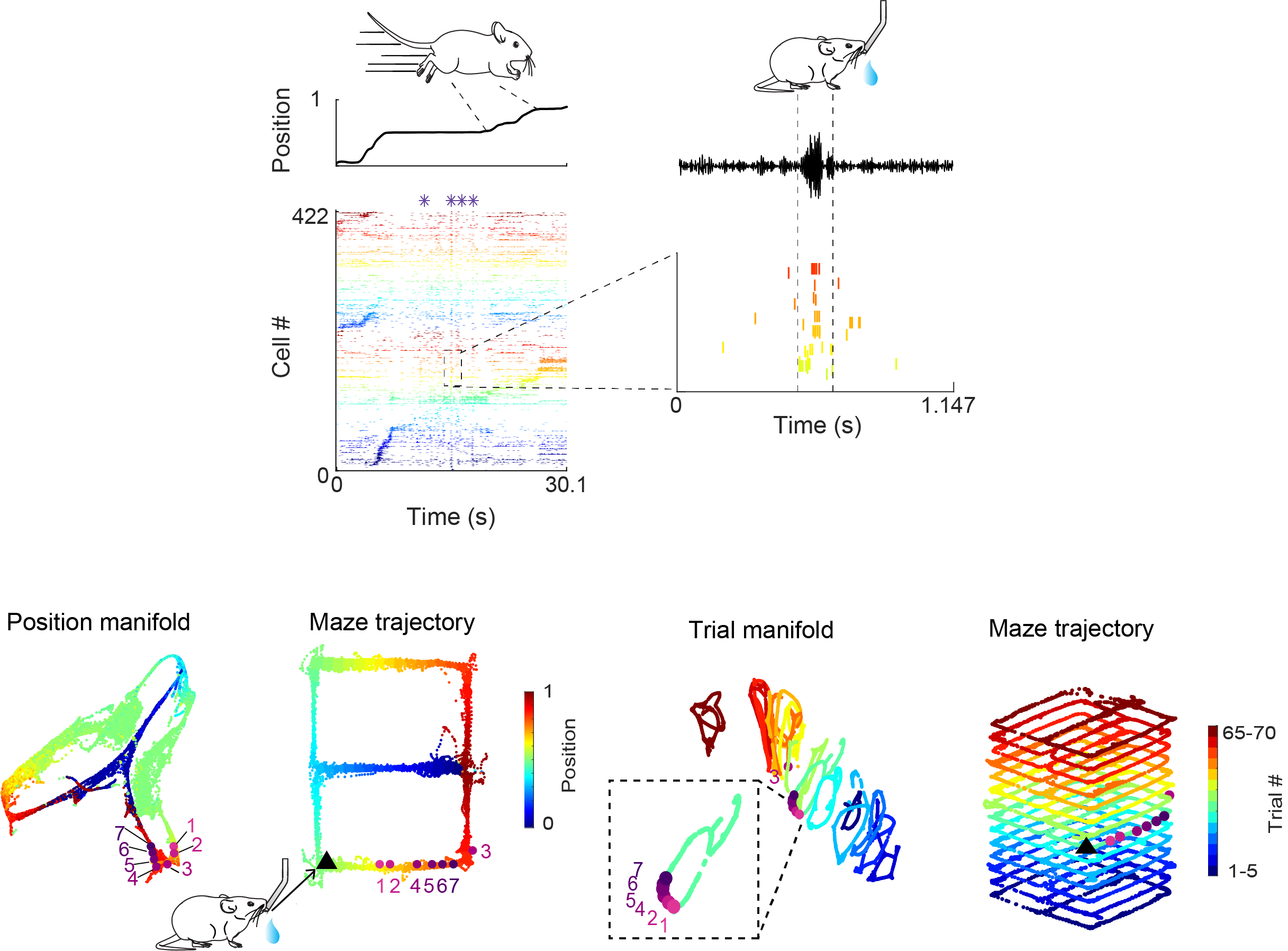
During NREM sleep 😴, ripples resume their activity. Are awake ripples related to those during subsequent sleep (post-sleep)? We compared their population activities.
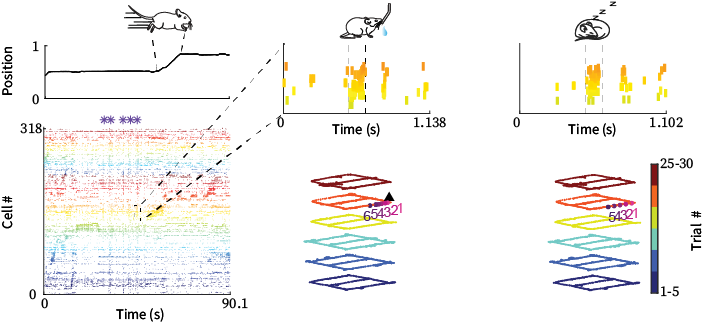
The distribution patterns of trial identity during post-sleep were highly correlated with that during maze replay, but not with pre-sleep replay. Mixed-effect linear regression analysis confirmed that post-sleep replay patterns were best explained by that during awake replay. The trials that were replayed more during awake ripples were selectively consolidated more during sleep!!
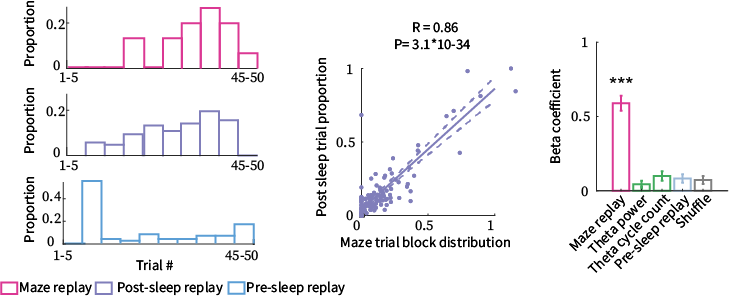
We replicated our main conclusions using 4 different methods – including decoding from the original high dimensional space using different distance metrics, decoding from UMAP low-dimensional embedding, as well as PCA space.
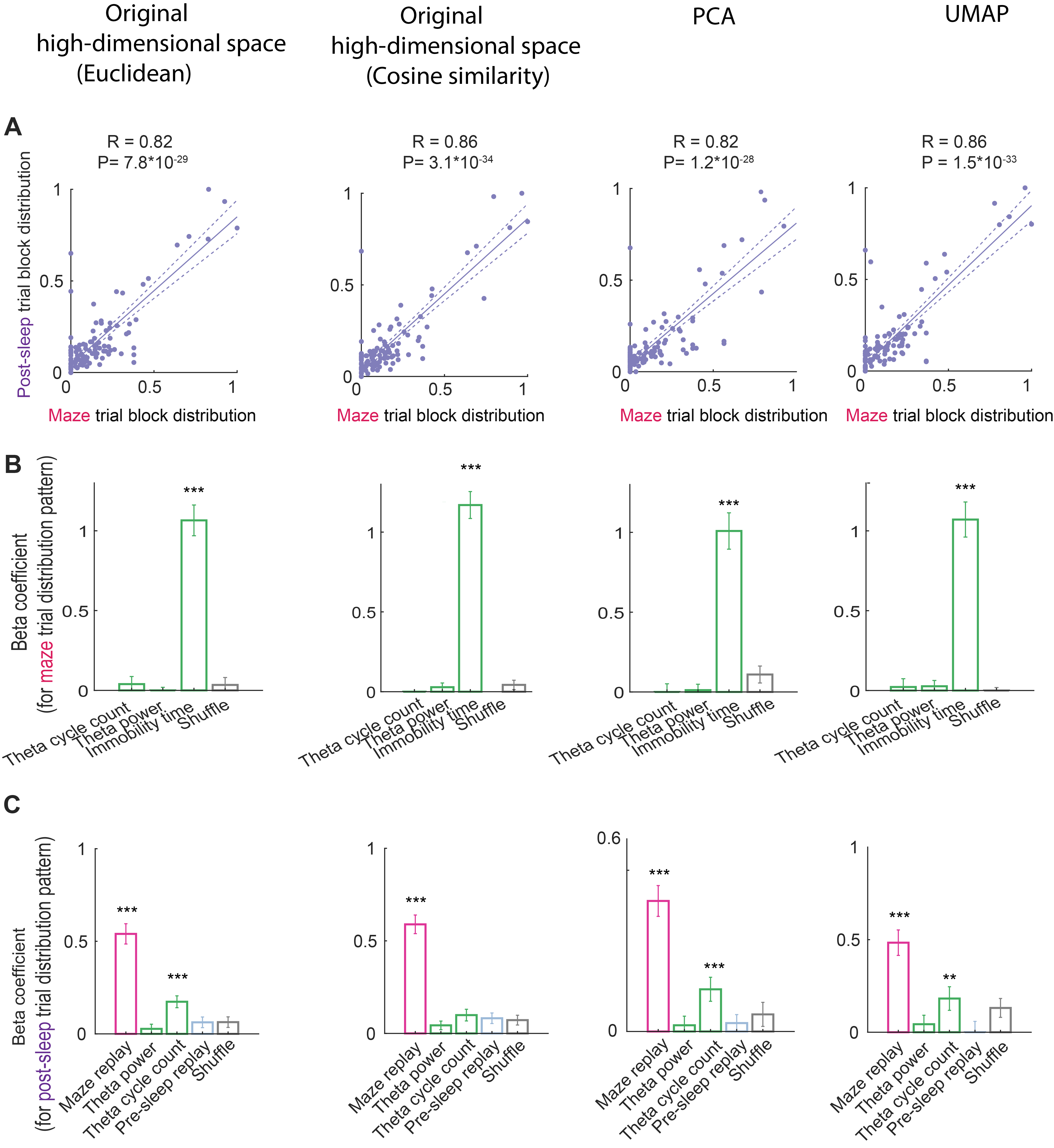
Taken together, our results suggest that awake ripples act as a memory tag. Experience tagged by the awake ripples are selectively consolidated numerous times during sleep.
- Check out this amazing video covering our paper! It serves as a great intro if you are not familiar with the field.
How to cite us ?
Enjoyed reading this post and found our demo code useful? Our paper can be cited as follows:
Wannan Yang, Chen Sun, Roman Huszár, Thomas Hainmueller, Kirill Kiselev, György Buzsáki. “Selection of experience for memory by hippocampal sharp wave ripple.” Science 383, 1478-1483 (2024).
You can access the paper from the Science website here , the project website here, or from the Buzsaki lab website here.